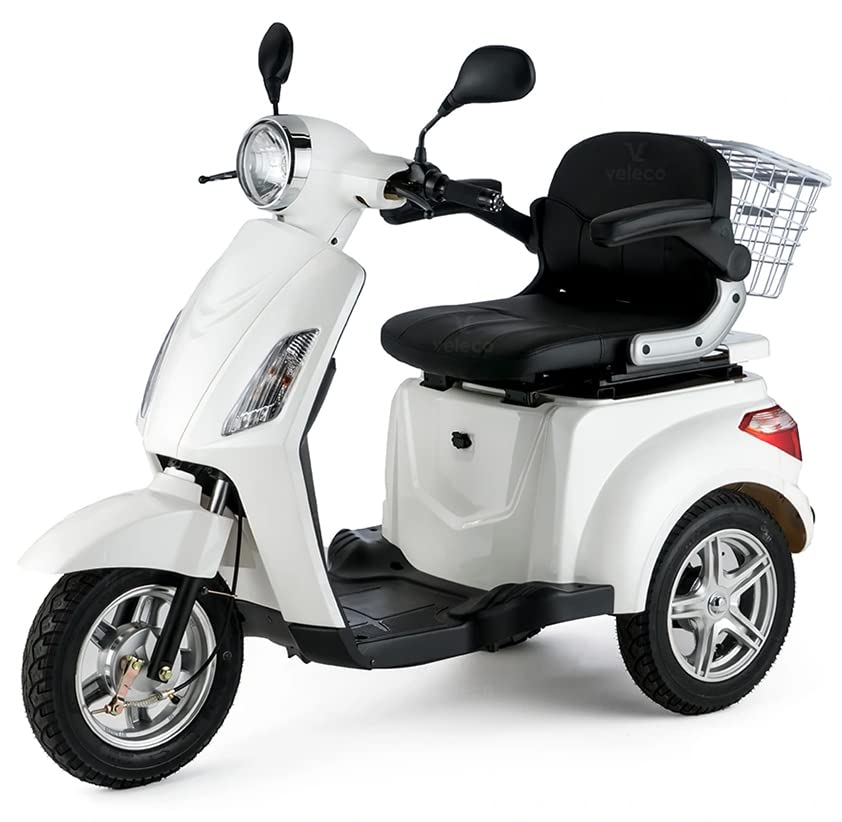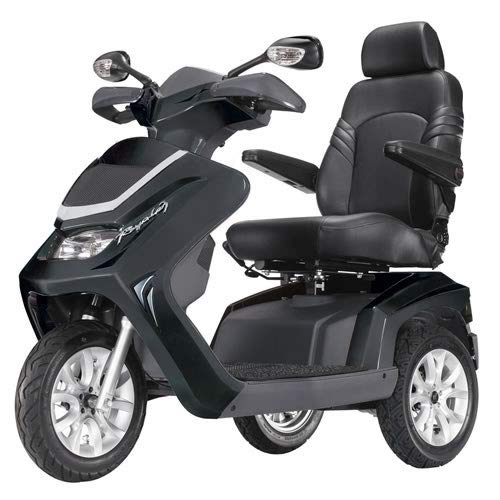The 10 Most Worst Electric Micro-Mobility Fails Of All Time Could've B…
페이지 정보
작성자 Leesa 댓글 0건 조회 180회 작성일 24-11-26 22:03본문
 NYCHA and EV Micro-Mobility
NYCHA and EV Micro-MobilityEV micro-mobility offers an affordable solution to fill in the gaps between first and last miles and complements public transportation. NYCHA recognizes the importance of e-bikes, e-scooters and shared e-scooters to help people with low incomes.
They also present particular problems. They need to be tracked, monitored and controlled.
Accessibility
Electric micro-4 wheel mobility scooter lightweight electric scooter for adults is a fast-growing segment of the transportation industry. It provides service providers and technology opportunities to transform urban mobility models and also reduce congestion. However, the growth of this market has also created challenges for the industry. These include data collection, safe battery implementation and establishing charging infrastructure. These challenges need to be addressed in order to ensure that electric mobility scooters for adults with seat micro-mobility is available for all, including those who are disabled.
E-bikes, escooters, and other small, light foldable electric mobility scooter devices allow users to go farther and faster comfortably than traditional bikes or scooters. They can be used on city streets and on sidewalks, bicycle trails, and on trails. They are powered by a lithium-ion battery that can travel up to 20 miles on one charge. They can be bought for personal use or rented out through sharing systems.
In cities all over the world, a rising number of innovative ebikes and escooter models are being integrated into their shared mobility networks. This has allowed them to reduce their emissions and improve their efficiency. These vehicles also offer new transit options to people who otherwise would have to depend on cars to travel. These vehicles have improved access to mobility Scooter Electric 4 Wheel services, and helped communities survive events like oil shortages and severe weather disruptions.
In recent years, the ebike market in the United States has grown rapidly thanks to technological advancements as well as consumer demand. The market is dominated by a few companies, such as Ninebot, Segway, and Yunxi, which make high-quality products that are priced at a reasonable price. These companies are striving to increase their market share with aggressive marketing strategies and partnerships with bicycle manufacturers.
Although ebikes, escooters indoor electric mobility scooter scooters and other micromobility devices consume relatively little electricity however, they will increase the energy demand on the grid. This will require substantial investment in infrastructure and charging stations. Utilities can prepare for an increase in demand by taking advantage of smart grid technology. They can analyze consumer charging behavior, introduce demand response programs, and offer incentive-based rate plans for EV Charging.
The potential fire hazards that come with e-micromobility are still an issue despite their promise to increase economic equality and social equity. The growing number of e-micromobility devices will also require stricter rules to ensure the safety of residents. NYCHA's policy on e-micromobility is designed to prevent fires and other injuries, while providing residents with an affordable and convenient transit alternative.
Energy efficiency
Electric micro-mobility is more environmentally green and uses less energy. The battery is made of renewable resources and does not emit carbon dioxide. This is an important benefit for cities striving to achieve carbon neutrality and reduce pollution in the air. In addition, the vehicles require less space for parking and are quieter than cars.
Whether it's an e-scooter, an e-bike, or a monowheel, these innovative vehicles are transforming the way people move in urban areas. Their increasing popularity has led city governments to examine their impact on sustainable transportation. 3 wheel electric mobility scooter for adults uk micro-mobility, based on the model and the power source, can cut down on traffic congestion, improve quality of air, and help save fuel. The new vehicles may also challenge existing infrastructures and laws.
The most popular micromobility devices are e-scooters, which are compact and electrically powered scooters that can be hired through smartphone apps. These scooters can travel at up to 30 km/h and can be ridden on sidewalks, bicycle paths, or streets. Other options for micromobility are the rickshaws and ebikes.
These new modes of transportation are growing in popularity and the share of modalities of EMM will increase by 5-10% by 2030. Researchers need to better comprehend EMM use and the factors that affect it, including contextual and individual factors. This scoping review explores the current understanding of the factors that influence of EMM use and identifies the future research priorities.
Currently, there are many barriers to the widespread adoption of electric micro-mobility. One of the issues is the absence of a reliable charging infrastructure for e-scooters and other devices. Another concern is security. Unless these issues are addressed the potential benefits of this type of transportation could be reduced.
As a result, some cities are trying to find ways to accommodate these vehicles without damaging the integrity of existing roads and bridges. One solution is to construct dedicated laneways. In this case the driver of the vehicle is required to follow strict traffic rules and adhere to speed limits. Furthermore the device will have to be outfitted with specialized technology to function properly. Additionally, the batteries must be constructed to conform to international standards and undergo frequent replacements.
Environmental impact
Electric micro-mobility offers a variety of environmental benefits including less energy consumption and emission. The devices require electricity in order to run and, therefore, their use could increase demand at peak. Utilities can reduce this impact through analyzing consumer charging habits and introducing demand-response programs. They can also implement customer retail electricity net-metering and incentive-based rate plans for charging EVs. The rise of ebikes and escooter services also provides new business models and investment opportunities for utilities.
The life cycle assessment is a key factor when evaluating the environmental impact of shared electric micro-mobility. LCA is a comprehensive assessment of the environmental burden associated with shared electric micro-mobility by taking into account a number of factors, including raw material extraction and manufacturing, energy consumption, and end-of life management. Most studies employed the cumulative energy demand method to determine primary energy consumption, while others used other methods of impact assessment such as ReCiPe or IPCC.
The degree of sensitivity of GWP estimates derived from the life-cycle assessment of EMM is dependent on the lifespan of the vehicle as well as the battery's material and manufacturer, and the power source mix for charging. Rebalancing's sensitivity is also important. About half of review studies used rebalancing scenarios in order to determine what effect it has on GWP estimations. A majority of the rebalancing scenarios show minimal impact, particularly when the vehicles are pulled by low carbon servicing vehicles, such as e-vans and e-cargo bikes or when service distances are reduced.
While a wide variety of micromobility vehicles have emerged, several barriers remain for the industry to grow. They include a lack policies that support a shared micromobility system, and concerns over the security and reliability of e-bikes and scooters. While the market is rapidly expanding, several private and public entities have been working to tackle these issues. These initiatives include the establishment of a shared bike and scooter system that allows people who would not otherwise be able to use traditional scooters and bicycles to be able to use. Other initiatives include the development of mobility-as-a-service platforms, which consolidate a variety of transportation options into one convenient service.
Safety
Micro-mobility has gained tremendous popularity in the past few years. However there's much work to be done. While the latest technology has many advantages but it also raises several safety issues. Battery fires, accidents and accidents are among the most frequently occurring risks that are associated with micromobility. However, a variety best practices can reduce these risks. NYCHA has developed a set rules to ensure the safe usage of e-micromobility within its communities. In addition, NYCHA has established a set of best practices for charging the batteries of these devices. This will help reduce the chance of fires that can be especially dangerous for seniors and children.
The biggest safety concern with electric micromobility is the risk of battery fires. These devices are powered by lithium-ion batteries, which could cause serious injuries or death when they catch fire. Lithium-ion batteries are highly explosive and release toxic gases, which makes them difficult to extinguish. To prevent this from happening you must follow the recommended charging methods and purchase top-quality batteries manufactured by reliable brands. It is also essential to buy a device that's been UL (Underwriters Laboratories) tested and certified.
Another issue with safety is that existing administrative and regulatory structures are only beginning to recognize and track incidents involving e-bikes and e-scooters. Police incident reports and hospital emergency rooms have only begun collecting searchable data on e-scooterand ebike-related injuries as of 2023. This leaves a gaping space in the safety and legal information.
Fortunately, many organizations are working to address these challenges by building an infrastructure of safe and fair mobility options for all residents. They are forming teams of departments that cross departmental boundaries and conducting pilot studies to test innovative methods to encourage micromobility. These initiatives include community engagement, e-scooter ambassadors programs, and rider training. They are also studying the possibility of new funding sources as well as establishing procedures for reporting injuries.
 The advent of electric micromobility has disrupted traditional transportation models. However, it is an excellent method to increase accessibility and mobility for people with disabilities. These vehicles are a good alternative to walking, or using a wheelchair. They can also assist in bridging the first and last mile gap. These vehicles are also a great alternative for seniors who may not be able to drive or walk for long distances.
The advent of electric micromobility has disrupted traditional transportation models. However, it is an excellent method to increase accessibility and mobility for people with disabilities. These vehicles are a good alternative to walking, or using a wheelchair. They can also assist in bridging the first and last mile gap. These vehicles are also a great alternative for seniors who may not be able to drive or walk for long distances.- 이전글Where Can You Find The Best Medium Scooters Information? 24.11.26
- 다음글10 Ways To Build Your Indoor Scooters Empire 24.11.26
댓글목록
등록된 댓글이 없습니다.

